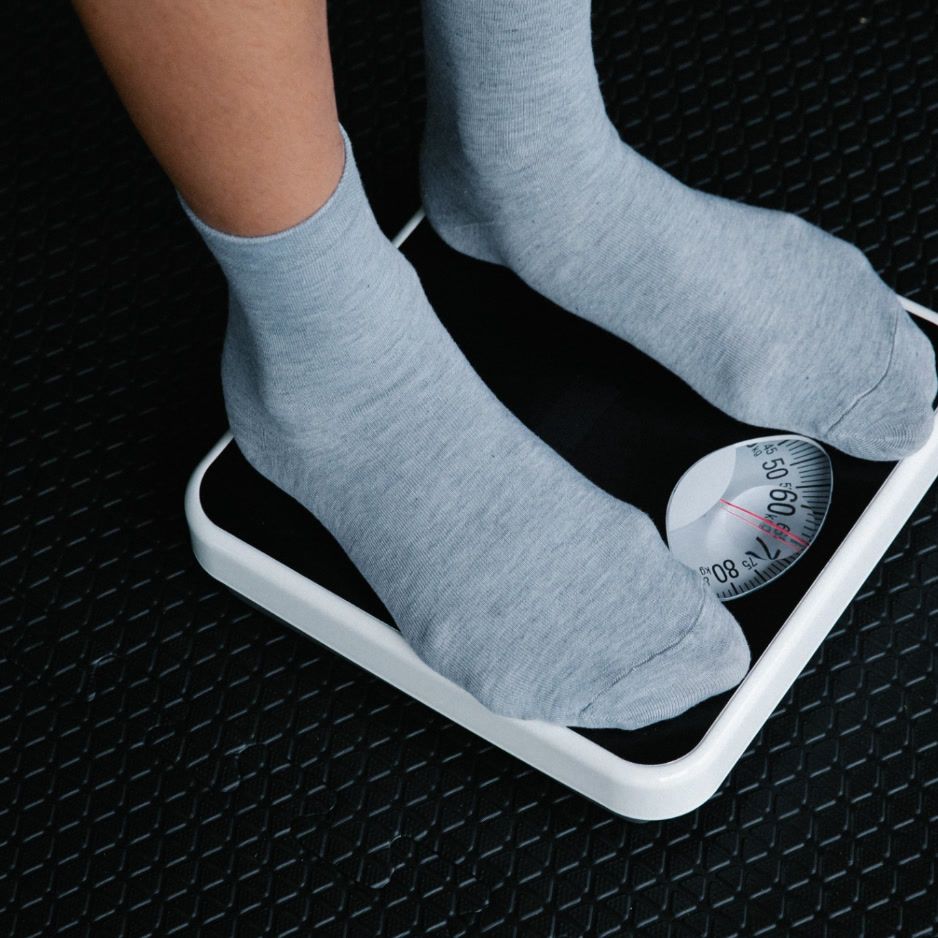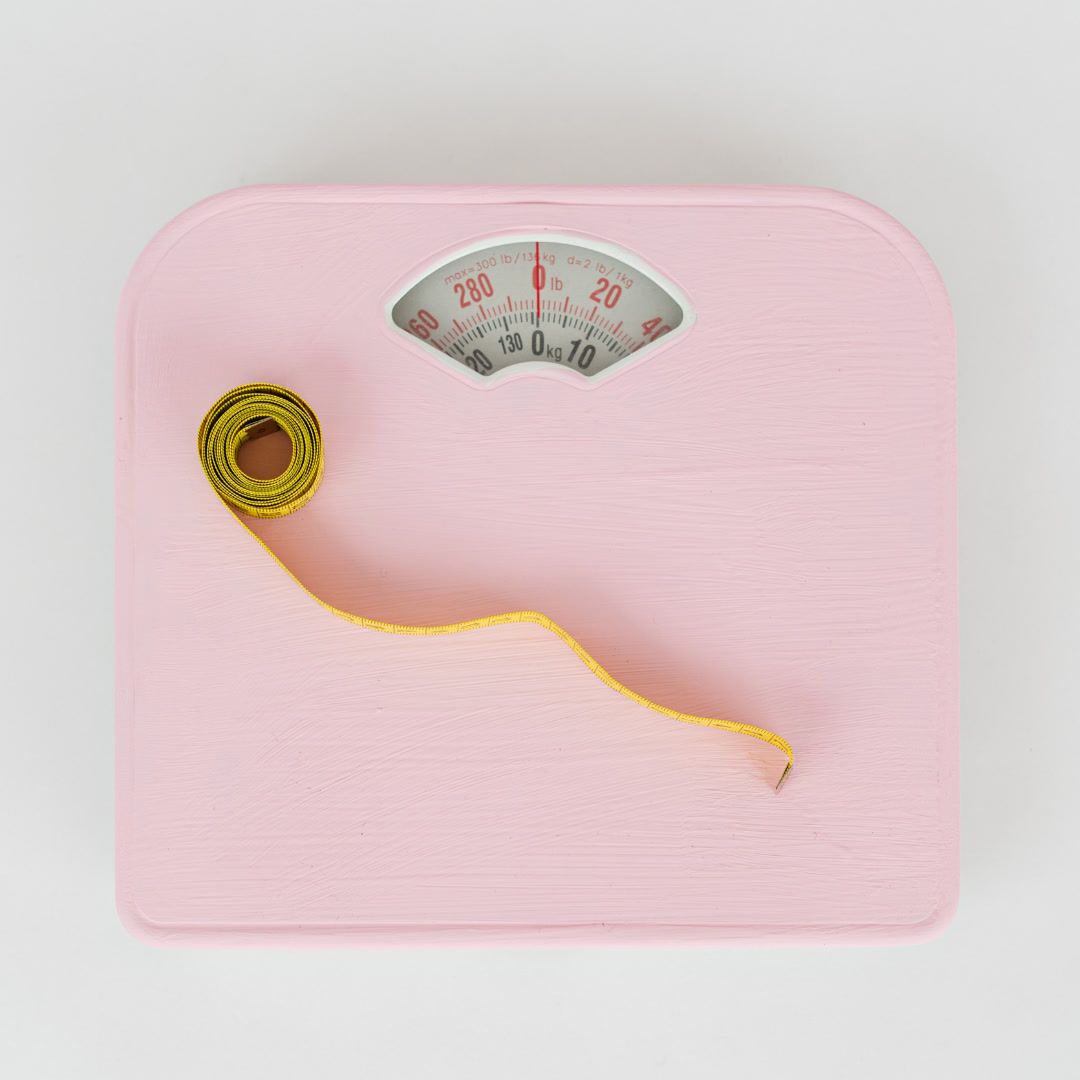Pull-Up Bar Buyer’s Guide: Choosing the Right Bar for You
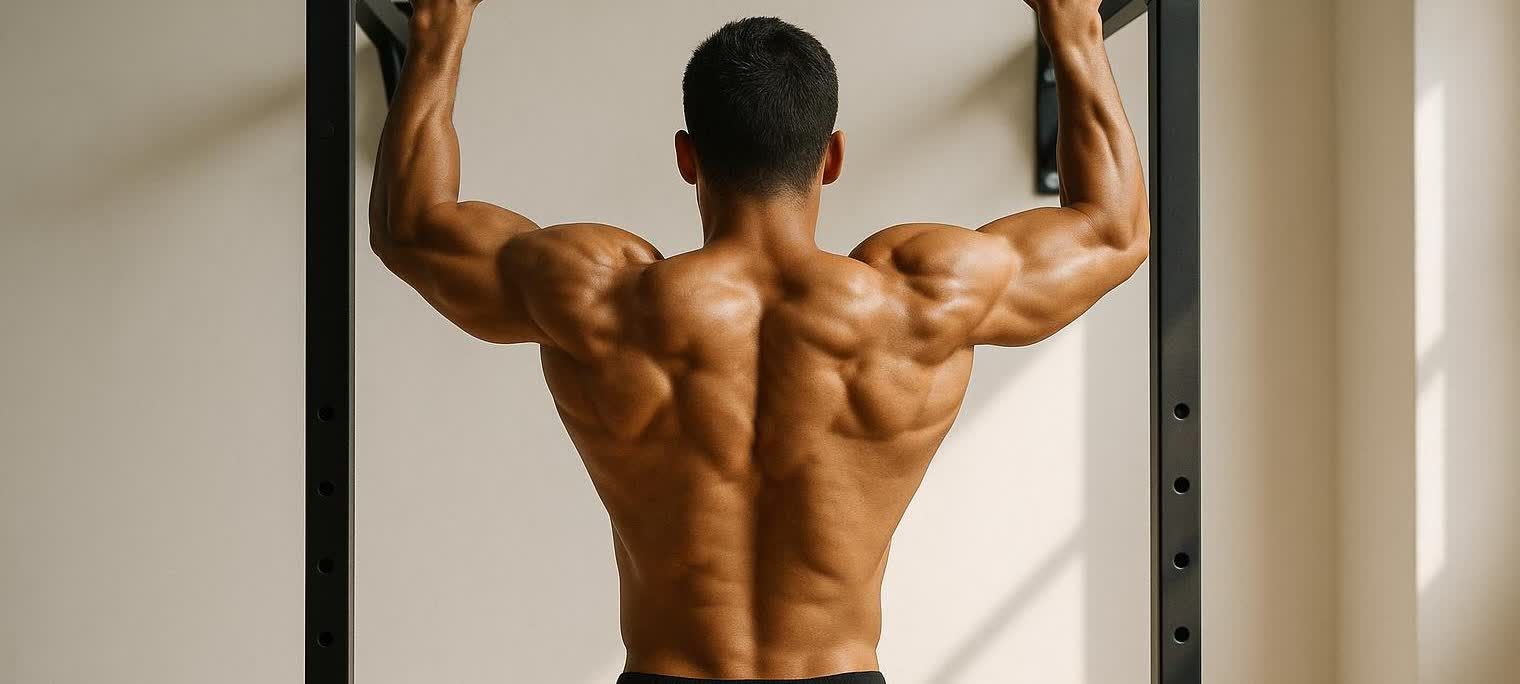
Pull-Up Bar Buyer’s Guide: Find the Right Bar for You
Thinking about adding a pull-up bar to your home setup? Smart move. Pull-ups develop the lats, upper back, shoulders, arms, and grip in a compact, efficient way—and they integrate seamlessly with bodyweight programs, fat-loss phases, and progress you can verify over time. Pull-up training can help build upper-body and grip strength, with carryover to daily performance and fitness.
This guide helps you pick the best pull-up bar for your living situation (apartment vs. house), training level (first pull-up or advanced skills), and budget—without wrecking your door frame or your drywall.
Quick Picks by Scenario
- Apartment, no drilling allowed: Over-the-door lever-style doorway bar with wide pads that sit on the trim. Choose reputable models, follow weight limits, and test stability before every session. Doorway bars are convenient, portable, and affordable—just know they can stress trim over time if misused. See this comparison of door vs. wall bars for pros and cons.
- Intermediate/advanced, want multi-grip stability: Wall-mounted pull-up bar anchored into studs. These offer higher stability and load capacity for explosive reps and accessories like bands or rings. For examples and pricing, browse Titan’s pull-up bars.
- Dedicated home gym or garage, high ceilings: Ceiling-mounted pull-up bar fixed to joists or a stringer board. Great clearance and rock-solid feel when properly installed—even with non-standard stud spacing if you add a stringer.
If you’re training pull-ups as part of a broader bodyweight plan, explore:
Pull-Up Bar Types: Pros, Cons, and Best Uses
| Type | Best For | Pros | Cons |
|---|---|---|---|
| Doorway (jamb/lever) | Renters, travelers, quick setups | Tool-free, portable, inexpensive | Height is limited; potential door-frame stress; lower max loads |
| Wall-mounted | Most people seeking stability and variety | High stability; can mount higher; works for leg raises and accessories | Requires drilling into studs; not for thin/plaster walls; permanent |
| Ceiling-mounted | Garage/home gym with overhead clearance | Great clearance; rock-solid feel when properly anchored | Requires joist/stud mounting; planning if studs aren’t standard |
| Rack-mounted (on a squat rack/rig) | Home-gym builders & heavy users | Very high capacities; versatile | Requires compatible rack; not space-saving |
| Free-standing tower | No drilling, multi-exercise stations | No wall damage; dip/leg-raise options | Larger footprint; can feel less rigid |
| Portable/outdoor | Parks, travel workouts | Packs small; outdoor use | Lower max loads; skill ceiling for advanced moves |
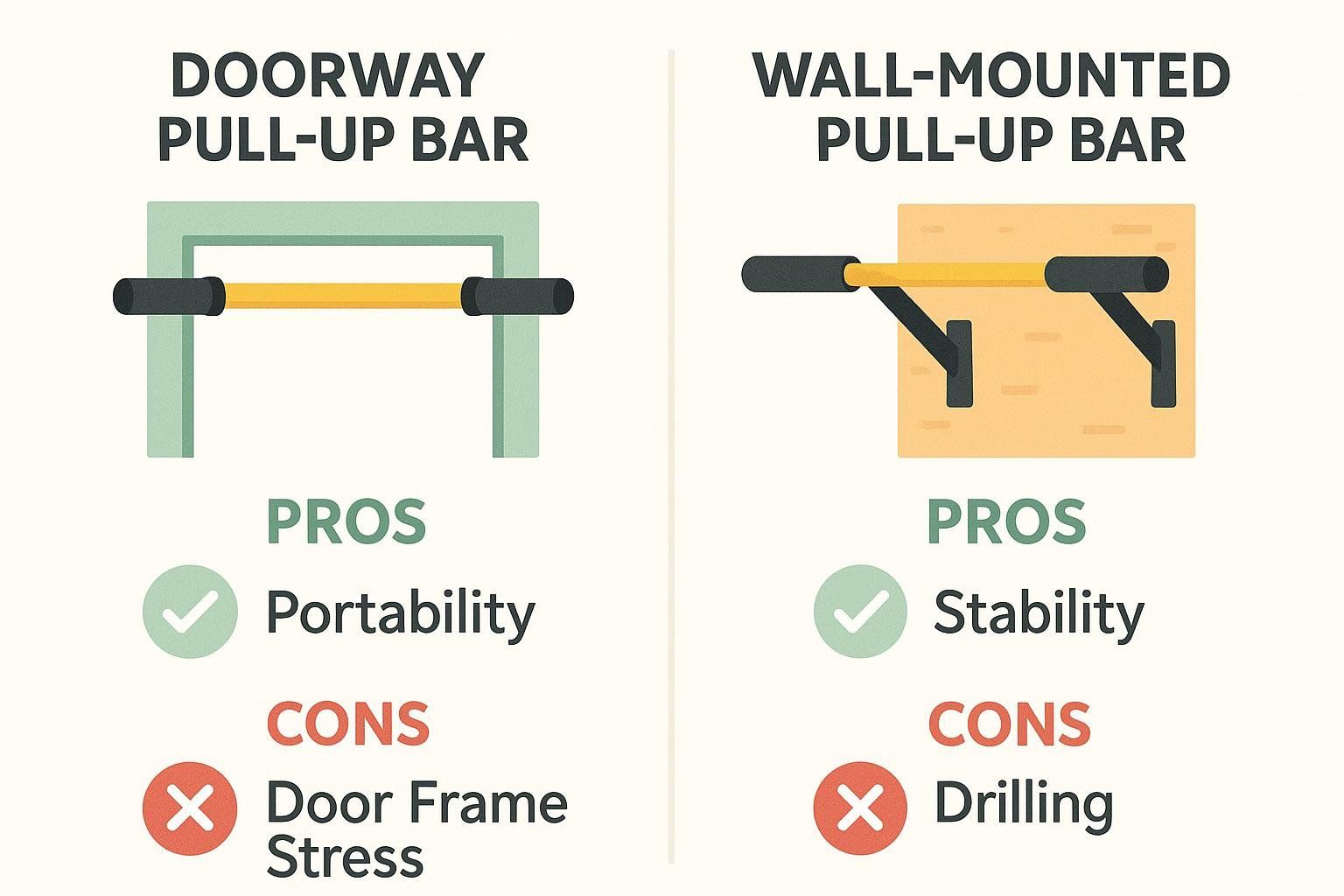
Note on capacity ranges: Many doorway bars top out near ~120 kg (≈264 lb) in manufacturer specs, and can stress trim over time if used dynamically. In contrast, high-quality wall units often list 400 lb+ ratings, and some commercial multi-grip models go much higher. For instance, some heavy-duty wall bars are rated up to 850 lb with 28 mm knurled grips when properly mounted to 16-inch studs.
The Key Specs That Actually Matter
- Weight capacity: Treat this as the ceiling for your bodyweight plus any added load. Wall/ceiling/rack bars usually support higher loads than doorway options; check the product rating and the mounting surface.
- Bar diameter and grip: A 1–1.25 inch (≈25–32 mm) grip is common across pull-up and barbell equipment. Within this range, smaller diameters reduce hand opening angle and can improve grip security, while larger diameters challenge grip strength more. Choose a diameter that lets you maintain a full, secure wrap without forearm fatigue limiting your sets.
- Materials and finish: Powder-coated or stainless steel resists rust. Outdoor bars should have weather-resistant coatings and drainage.
- Grip options: Neutral, angled, and wide grips expand training variety. Multi-grip frames and add-on handles help target different back fibers—see our back anatomy primer for what each grip emphasizes.
- Mount pattern and stud compatibility: Check bracket width versus your stud spacing. Interior studs are often 16 inches on-center, but some walls use 24 inches—particularly with advanced framing practices.
Safety First: Doorway vs. Wall/Ceiling Mounts
- Doorway bars work for occasional, controlled workouts but can mark or stress trim—especially with swings or kipping. Choose models with broad, grippy pads; avoid dynamic moves; and inspect the frame regularly.
- Wall/ceiling bars offer superior stability and exercise freedom when anchored into solid studs or masonry with the correct hardware (lag screws, proper depth). Many brands include step-by-step install guides.
Installation Planning & Checklists
Before you drill or hang anything, take five minutes to plan. It’s the difference between a rock-solid bar and a warranty claim.
1) Confirm your structure
- Stud spacing: Interior walls are often 16" on-center; some homes (especially with 2×6 exterior walls or energy-efficient “advanced framing”) use 24" on-center.
- Material: Never mount into drywall alone. Use studs or solid masonry; follow the brand’s instructions.
2) Choose the right hardware
- Lag screws/anchors: Use manufacturer-specified diameters and lengths. For non-standard spacing, mount a solid wood “stringer” (e.g., 2×6) across multiple studs and bolt the brackets to the stringer to distribute load.
3) Map your clearances
- Headroom: As a rule of thumb, leave at least 12 inches of minimum clearance above the bar so you can clear your chin and work leg raises comfortably.
- Swing space: Leave room in front and behind for leg raises and banded accessories.
4) Build your install checklist
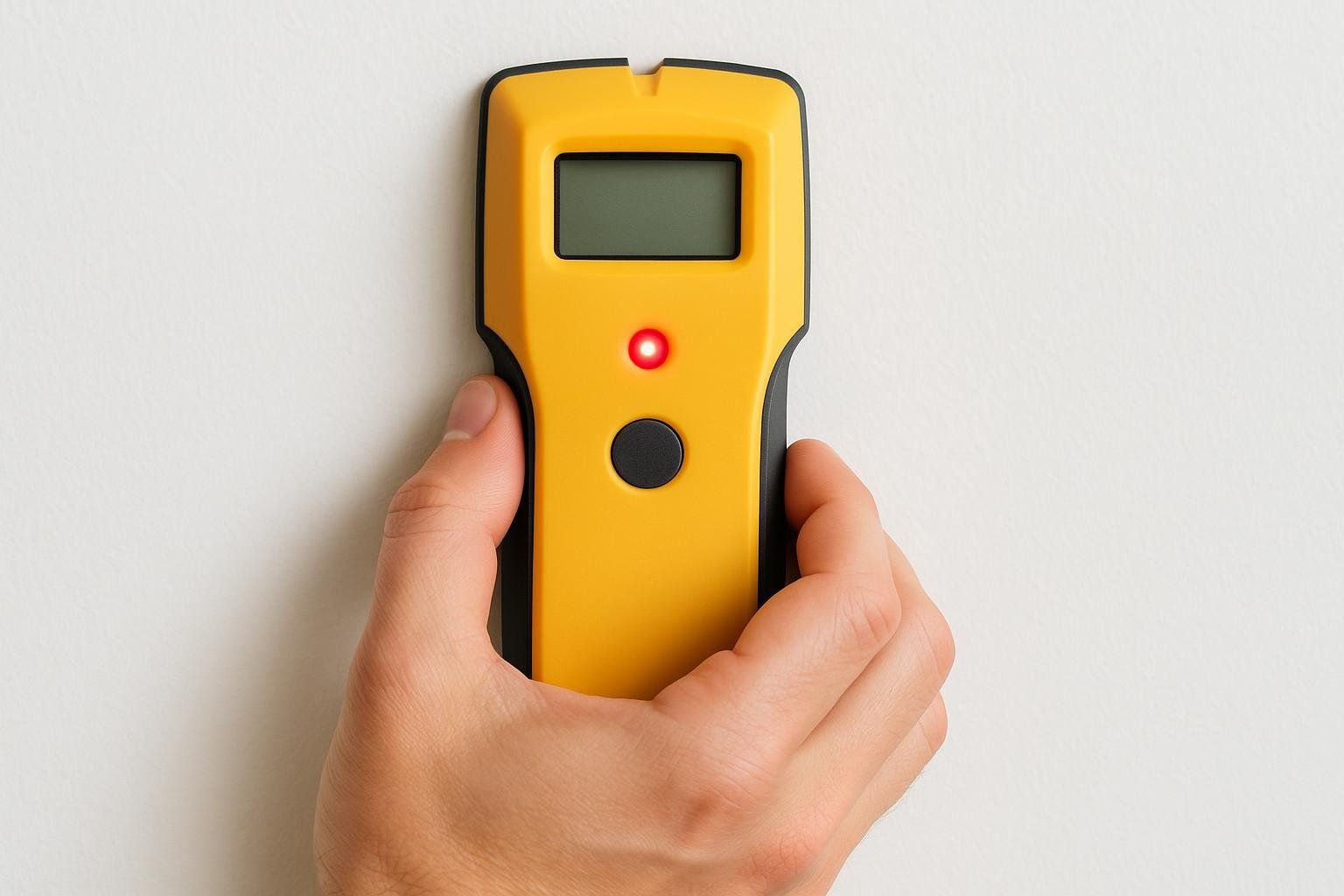
- Locate two studs with a stud finder and verify by pilot drilling
- Level and mark hole positions on both brackets
- Pre-drill pilot holes to the correct depth and diameter
- Drive lag screws snugly (do not overtighten and strip)
- Test: Hang with bent knees and gently load before first workout
Doorway Bar Checklist (No-Drill)
- Measure trim depth and door thickness for compatibility
- Center the bar and seat pads firmly on the frame
- Test with a cautious, controlled hang before your first rep
- Avoid kipping/dynamic swings; keep movements controlled to protect the frame
Ceiling-Mount Tip
- If joists don’t match your bracket width, install a perpendicular stringer (2×4/2×6) across multiple joists and mount into the stringer—this solves odd spacing and spreads forces.
Damage Prevention & Ongoing Safety
- Pad contact points: Add protective pads where doorway bars contact trim; periodically check for compression marks or cracks.
- Torque check: Re-tighten lag screws after the first few sessions and quarterly thereafter.
- Weight honesty: If you’re near or above 220–250 lb—or you train dynamically—upgrade to a wall/ceiling/rack-mounted option with higher ratings.
- No drywall-only mounting: Ever.
Frequently Asked Questions (Quick Answers)
Can doorway bars damage frames? Yes—especially with dynamic swings or on weak/incompatible trim. Choose wide pads, keep reps controlled, and inspect regularly; consider wall/ceiling mounts if you’re heavier or train explosively.
What’s a good bar diameter? Around 1–1.25 inches (≈25–32 mm) suits most hands. If in doubt, pick ~28–30 mm for general use and adjust based on grip comfort.
How do I handle non-standard stud/joist spacing? Use a perpendicular stringer secured across multiple studs/joists, then mount the bar to the stringer.
How much headroom do I need? Aim for at least 12 inches above the bar for comfortable chin-over-bar reps and leg raises.
Programming: 4 Weeks to Your First Pull-Up
Use this structure alongside our full calisthenics plans. Warm up dynamically first, then try:
Week 1: Foundations (2–3 days/week)
- 3×8–10 inverted rows (table or low bar)
- 3×6–8 band-assisted chin-ups or controlled negatives (3–4 s down)
- 3×20–30 s dead hangs (mix passive and active)
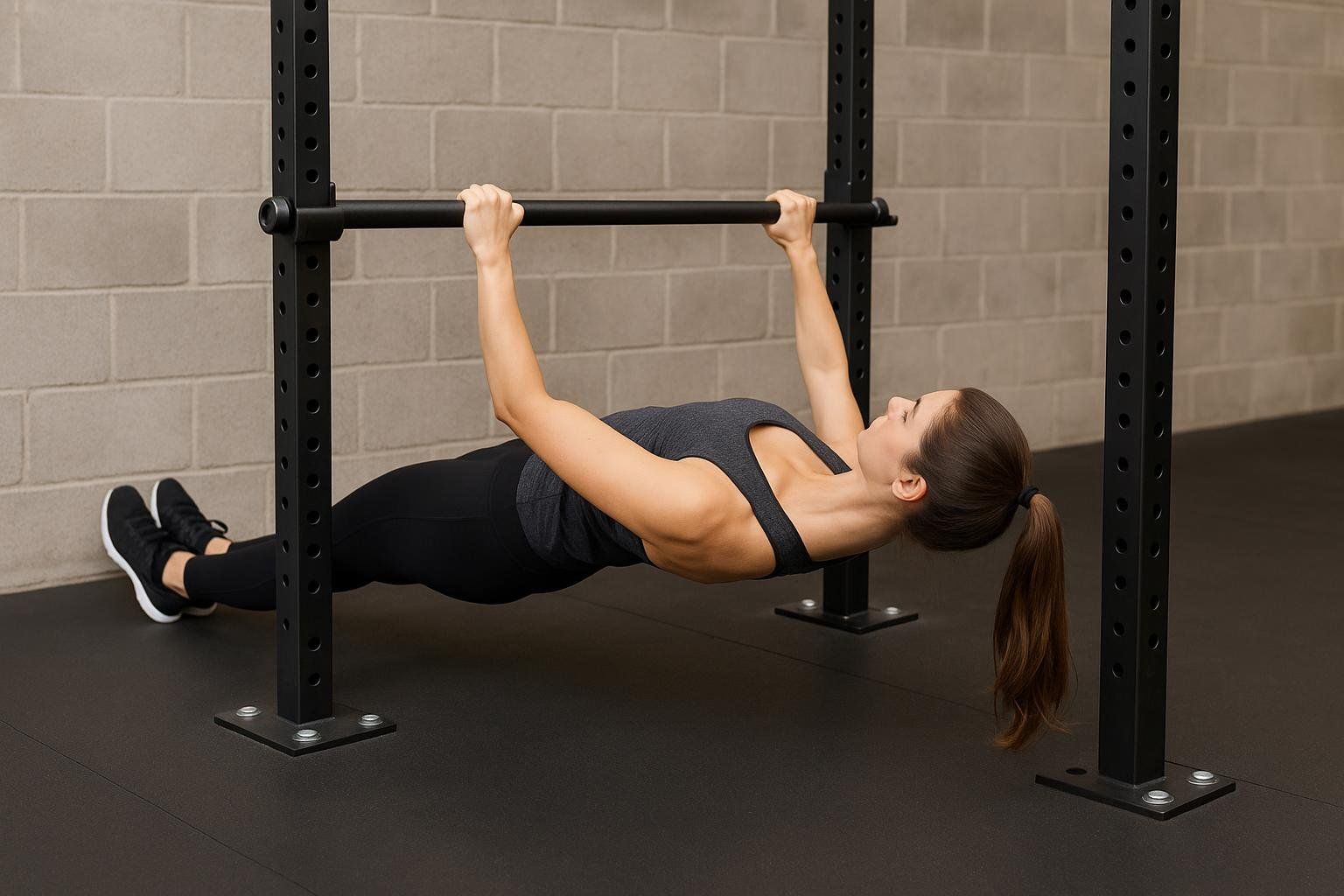
Week 2: Volume + Eccentrics (2–3 days/week)
- 4×8 inverted rows (progress leverage)
- 4×4–6 assisted pull-ups or 4×3 negatives (4–5 s down)
- 3×20–30 s active hangs + 2×8 scap pull-ups
Week 3: Specific Strength (2–3 days/week)
- 5×5 assisted pull-ups (reduce band help each session)
- 4×5–8 chest-supported rows or feet-elevated rows
- 3×20–30 s hangs + 2×6–8 hollow-body holds
Week 4: Test Week (2–3 days/week)
- Session 1: Try 1–2 strict chin-ups (palms facing you). If not yet, do 3×3–4 negatives (5 s) and retest after 3 days.
- Session 2: 5×3 assisted pull-ups with minimal help + 3×8 inverted rows
- Session 3: Retest for 1 strict chin-up or pull-up
Want more structure? See our bodyweight plan and learn how to integrate leg raises safely.
Maintenance & Accessories
- Chalk or liquid chalk: Improves grip and reduces slip.
- Bands: Assist early pull-up work and add overload later.
- Suspension trainer/rings: Expand exercise variety; ensure your bar’s capacity covers dynamic loading.
- Clean and inspect: Wipe sweat/oils off the bar to preserve knurl/finish; tighten hardware quarterly.
Track Your Progress (and Protect Your Shoulders)
- Training plan: Start with a dynamic warm-up and progress your pulling weekly. For big-picture guidance, see Strength Training for Beginners.
- Body-comp tracking: Pair your training with periodic DEXA scans to see fat, lean, and even visceral fat changes—not just scale weight. Learn how scans work and how to improve your numbers.
Bottom Line
- Doorway bars win on convenience; wall/ceiling bars win on stability and longevity. Match the bar to your space, your bodyweight, and your training style.
- Respect the install. Studs or masonry only; correct hardware; periodic re-tightening.
- Progress patiently. Combine hangs, assisted reps, rows, and controlled negatives—and retest monthly.
When you’re ready to make your training data-driven, schedule a BodySpec DEXA scan to quantify lean-mass gains from your pull-up work and keep tabs on visceral fat.
